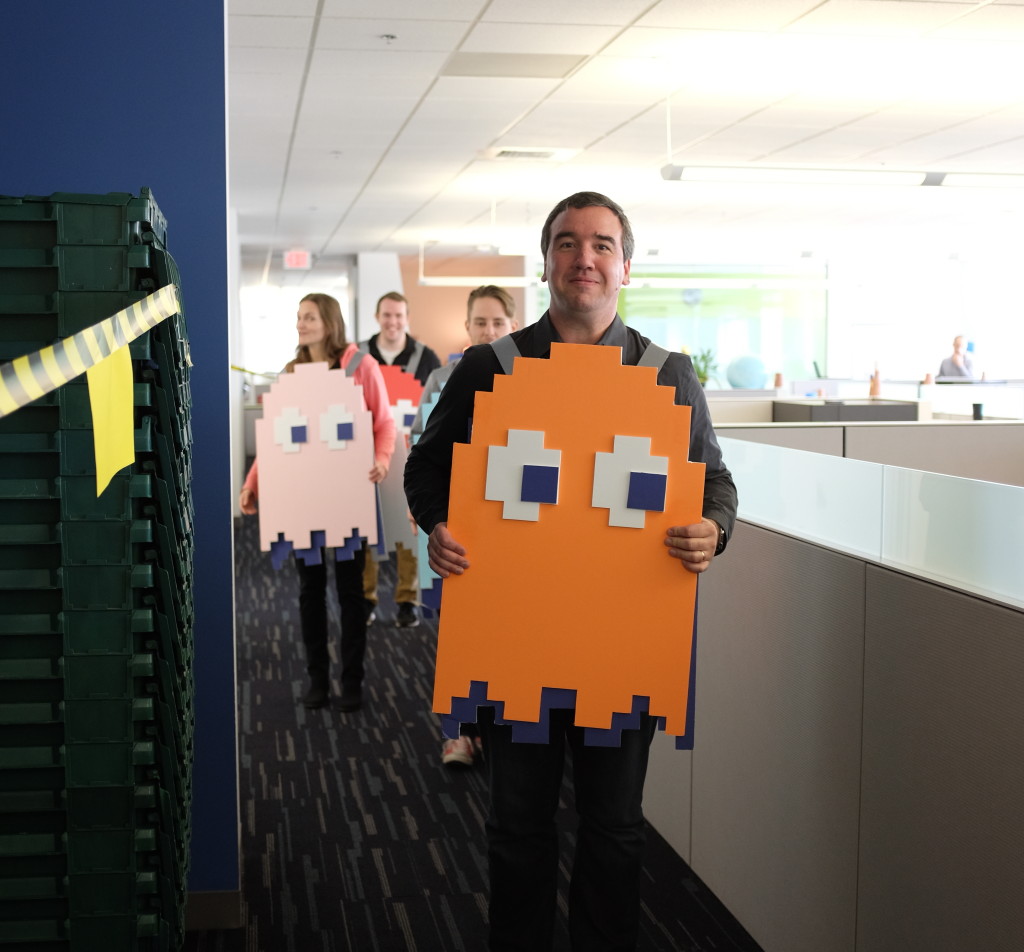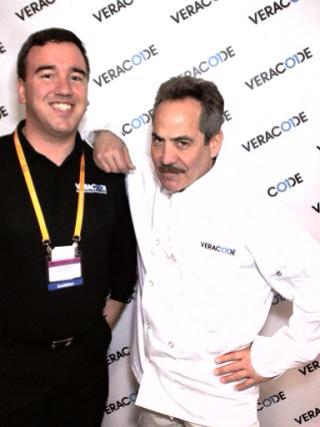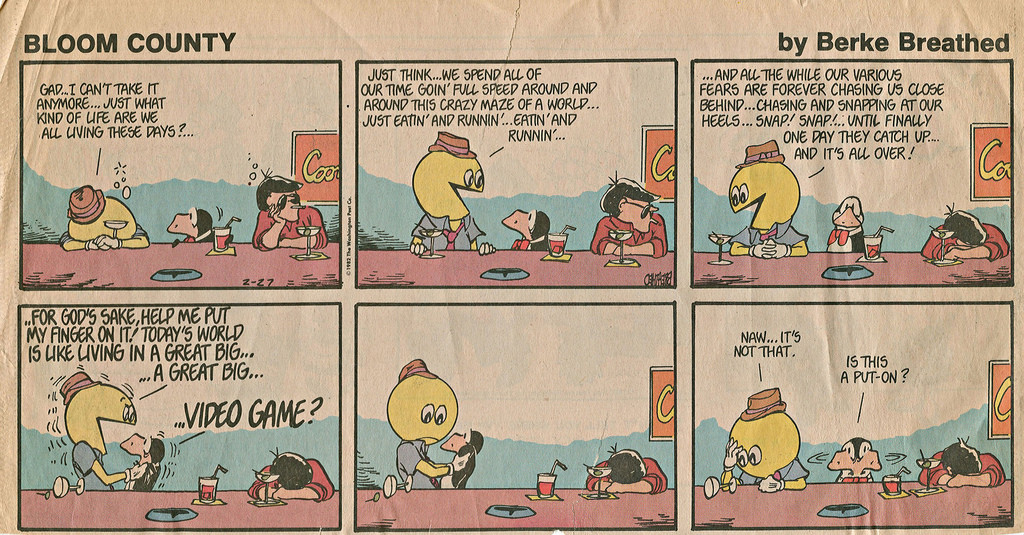Casey West: The Five Stages of Cloud Native. Lest we forget, you can’t be successful with cloud development if you’re cherry picking DevOps patterns.
Category: Internet
Smart thermostats, dumb market
One of the things I’ve been theoretically excited about for a while in iOS land is the coming of HomeKit, the infrastructure for an Internet of Things platform for the home that includes standard controller UI and orchestration of things like smart thermostats, light bulbs, garage door openers, blinds, and other stuff.
I’ve been personally and professionally skeptical of IoT for a while now. The combination of bad UX, poor software engineering, limited upgradeability, and tight time to market smells like an opportunity for a security armageddon. And in fact, a research paper from my company, Veracode, suggests just that.
So my excitement over HomeKit has less to do with tech enthusiast wackiness and more to do with the introduction of a well thought out, well engineered platform for viewing and controlling HomeKit, that hopefully removes some of the opportunities for security stupidity.
But now the moment of truth arrives. We have a cheap thermostat that’s been slowly failing – currently it doesn’t recognize that it has new batteries in it, for instance. It only controls the heating system, so we have a few more weeks to do something about it. And I thought, the time is ripe. Let’s get a HomeKit-enabled thermostat to replace it.
But the market of HomeKit enabled thermostats isn’t very good yet. A review of top smart thermostat models suggests that Nest (which doesn’t support HomeKit and sends all your data to Google) is the best option by far. The next best option is the ecobee3, which does support HomeKit but which is $249. And the real kicker is that to work effectively, both require a C (powered) wire in the wall, which we don’t have, and an always on HomeKit controller in the house, like a fourth generation Apple TV, to perform time-based adjustments to the system.
So it looks like I’ll be investing in a cheap thermostat replacement this time, but laying the groundwork for a future system once we have a little more cash. I wanted to start working on the next-gen AppleTV soon anyway. Of course, to get that, I have to have an HDMI enabled receiver…
Exploring EPCOT’s Horizons ride from the inside
I have a new obsession: reading the archives of the Mesa Verde Times blog. This pseudonymous walkthrough of a series of surreptitious behind-the-scenes tours of the late, lamented Horizons future ride at Disney’s EPCOT is fascinating as much for the old-school blogging as it is for the actual content. Which, don’t get me wrong, is plenty fascinating, as it consists of pictures of hidden areas of the ride’s sets and maintenance areas, Easter eggs left by the ride’s designers (you’ll never guess what the designers hid in the fridge of the Desert Habitat Kitchen, next to the sausages).
Start at the beginning and read up.
Gigapixel

Slashdot: Google unveils “gigapixel” camera to preserve and archive art. While certainly no replacement for museum visits, this project, which uses a robot to take hundreds of high resolution close-up images, then stitch them together into a single zoomable image, yields spectacular results.
This is what Google does best: bring the physical into the digital in new and innovative ways that make information accessible for everyone. I wish they’d stick to their knitting a little more. We could use more gigapixel art photos, digitized books and better search results, and less of some of the distractions we’ve seen from them over the past few years.
Librarians of note
There have been two interesting appointments (or proposed appointments) in the world of librarians recently, one at the Library of Congress and one at the University of Virginia. Interestingly, both appointments revolve around the transformation of libraries from physical to digital.
First, UVA’s selection of John Unsworth as the next University Librarian and Dean of Libraries (UVA Today, Cavalier Daily). Unsworth’s selection makes sense on a number of levels. Back when I was an undergraduate, he was a founder of digital library sciences and the use of digital technologies in research at UVa with the Institute for Advanced Technology in the Humanities. More recently, as the dean of libraries at Brandeis he oversaw a large library system. Interestingly, from the CD article, it seems he’s stepping into a student-led debate over the role of libraries and the transition from physical to digital, with students protesting the sending of books from the stacks to long-term storage. I can’t think of too many other people I’d like to have thinking through the considerations in that debate.
Second, President Obama’s nominee for Librarian of Congress, Carla D. Hayden, got her Senate hearing yesterday (New York Times, Washington Post). As expected, the nominee’s bona fides as both a librarian and her capabilities in extending libraries into the digital future went unchallenged by the committee, though the relationship of the Copyright Office to the LOC was raised as a possible issue. Her smooth hearing was a nice update to her previous history in 2004 with the federal government, when in her role as head of the ALA she went toe to toe with then-Attorney General John Ashcroft over the library records provision in Section 215 of the PATRIOT Act. In fact, aside from the usual partisan carping in right wing blog circles, there seems to be remarkably little argument with the position that Dr. Hayden is precisely the right candidate for the job.
Why do issues of digital literacy and concerns about transitioning to digital humanities figure so largely in both these selections? I’d argue that they are the right questions for all libraries and other professions which rely on data, which these days includes just about … everyone.
Never too late to have a happy childhood

It seems I’m falling into a pattern where at least one day a week, I will end up posting for two days worth of material. This is one of those days. At least I have a good excuse for not posting. It was Veracode’s Hackathon IX this week, and that means craziness.
Monday’s activity? Live-action Pac-Man. What you can’t see from the photos is that there is actually a player. Pac-Man was wearing an iPhone on his chest, connected to Webex, with the camera turned on and headphones in his ears. Someone connected to a WebEx gave instructions to Pac-Man on how to move through the maze.
The ghosts all had simple rules of how to move just like in a real video game. So the whole effect was very much like feeding quarters to Pac-Man machines as a 12-year-old. But it gave me a new appreciation for the life of the ghost—all left turns and no free will. It got, frankly, boring after a while… until random turns brought me in contact with Pac-Man.
It all reminded me of this:
RIP Andy Grove

CNN: Andy Grove, former Intel CEO and personal computing pioneer, dead at 79. It’s worth taking a second this morning to think about why we remember what Andy Grove did when other pioneers of silicon are mostly forgotten.
Motorola, Texas Instruments and others built chips. Andy built an ecosystem.
While Wintel may rightly be regarded as an example of a noxious monoculture, mostly because of the Windows side of the equation, Andy recognized the potential for personal computers and ensured that they would run on his chips. And he recognized that Wintel was only one ecosystem that could have been built with Intel as its foundation—witness his convincing Steve Jobs to shift the architecture of Macs away from PowerPC to Intel chips in 2006.
I had an opportunity during the 2001 MIT Sloan Tech Trek to meet Andy. He spoke with a bunch of MBA students for a few minutes, and took questions. He struck me as a long thinker, so I asked him a long thought question: how long could Moore’s Law continue to hold before the physics of small matter caused it to bottom out? He was airy as he said it was a “20 year problem.” And he was right: he knew that there was plenty of room to continue innovating on the silicon. He didn’t say it, but I suppose he was more focused on the business of the ecosystem; even then you could read the writing on the wall that the antitrust suit, a resurgent Apple, and mobile computing were about to take the wind out of Microsoft’s sails.
I don’t know that I’ll ever get to talk to a more brilliant man (not counting Bill Gates, but I never got a chance to ask him any questions as an intern). Rest in peace.
“Has a Bacon number of 3”
I added a line to my Twitter bio recently that probably bears some explanation. Here’s my current bio:
Grammy Award winning product guy for Veracode, building the most powerful application security platform in the world. Has a Bacon Number of 3.
Most of this is self explanatory, as I’ve written about the Grammy and my employer before. But what the heck is a Bacon number?
Turns out, it’s an established measurement of celebrity that even has a (portion of) a Wikipedia article about it. The “Bacon number” of an individual is the number of degrees of separation he or she has from Kevin Bacon, where a degree of separation is usually understood as “has worked with.” You can use the Oracle of Bacon, online at the University of Virginia since the mid-1990s, to determine an individual’s Bacon number.
As for mine: I can justify it two ways. One is via former Boston Symphony Orchestra music director James Levine, with whom I share a few recording credits (including the Grammy), and who has a Bacon number of 2.
The second, and funnier, one is via the Soup Nazi, the Seinfeld character created by Larry Thomas. Larry Thomas has a Bacon number of 2, also, and he and I shared billing in Veracode’s trade show booth at RSA in 2013, when I spoke in the booth about application security. So there you go.

Flickr catch up
Back in the day before Facebook, we had to have multiple services for posts and pictures. I ultimately became a Flickr customer, but not without some wringing of hands about putting my photos in the service of another company.
These days, that concern seems incredibly naïve, considering how much of my writing and photography is currently behind locked walls at Facebook. Part of what I’m going to do with this new daily writing project is liberate some of the more interesting stuff that I’ve put into their walled garden and make it available on my blog, and on Flickr. I still have concerns about Flickr (especially in these days of angst for Yahoo, its parent), but it’s the best photo hosting service, hands down.
I just posted 20 new photos to my photostream, starting here. Go check them out!
Lonely hill: Apple’s stand on encryption
Rich Mogull of Securosis writing in TidBITS: Why Apple Defends Encryption. Great article summarizing the forces that drive Apple’s defense of encryption and resistance to introduction of a back door (briefly: their business model does not rely on compromising privacy, they understand that there is no such thing as a back door that cannot also be used by attackers, and it may be a personal issue for Tim Cook).
Rich’s analysis, which I agree with, aligns with another recently published article about the disparity in ranged weapons adoption in Europe in the Middle Ages. The question: why did it take the French and Scots nearly a century to adopt the cheaper, easier, and more effective longbow, instead continuing to rely on the more challenging crossbow? Answer: precisely because those technologies were cheaper and easier to adopt, they were blocked by the rulers of less politically stable states, who feared arming citizens with the weapon might lead to revolution. Only in more politically stable England was the longbow adopted.
There’s a clear analogy between restricting access to longbows and the current state desire to insert backdoors into consumer encrypted communications. What’s striking is the political difference in who’s doing the restrictions on crypto technology. It’s not just failed or unstable states (though there are plenty of those who seek to circumvent crypto), but also major global powers like the United States and India. I’m not sure whether that says more about the threat posed by crypto, or about the United States.
On the legality of peeping Toms
Boing Boing: Free Stanford course on surveillance law. Now I know what I’ll be doing in my spare time this month, and you should too.
At last month’s inaugural Black Hat Executive Summit, I learned a few things that surprised me about how existing US law applies to “cyber,” and I expect to continue to be surprised by this course. Probably unpleasantly, but who knows?
Ten years ago (soon): BloggerCon
Dave reminds us that it’s almost ten years to the day since the first BloggerCon. I was highly invested in blogging at that juncture of my life, having tried and largely failed to figure out where I fit inside Microsoft, and so I managed to combine a recruiting trip back East and attendance at the first day of BloggerCon.
I liveblogged much of what I saw of the day. I’m sure most of it is redundant with the other coverage, but in retrospect it’s interesting to read through the coverage and see how much of it was on target, or just off-target. I think the biggest bit that surprises me is the collective failure to imagine that blogging, per se, was just one manifestation of a million ways for individuals to share ideas and feelings with the world, or that most people would be most interested just in sharing those ideas and feelings with a few friends and family.
On being on the Business Blogs list on Boston.com
For about the past week, my blog has been linked from the Business page of Boston.com. Which is odd, because this isn’t really a business blog. Sometimes I write about technology strategy, occasionally about marketing; frequently about product management. But you’re just as likely to find posts about music, or turning 40, or the history of a 140-year-old singing group here.
So in the interests of truth in advertising: if you want all business writing all the time, better check somewhere else. If you don’t mind coming in on the middle of nine years of my writing about things that catch my attention: welcome.
Watch out, Rudolph
We haven’t taken down our Christmas tree yet. Sometimes I fantasize about just sticking the whole thing away, decorations and all, and hauling it out next year ready to go. But these guys did one better: they launched it. On 32 model rocket boosters (Estes D boosters, to be exact). Watch:
(Okay, it’s not really a tree, but who cares? It’s still one of the funniest things I’ve seen in a long time.)
Merry Christmas from Google: Cavalier Daily in Google News
A nice Christmas present from the Googlemind: if not a complete run, then a pretty good sampling of the full archives of the Cavalier Daily and its predecessor College Topics, the long standing student newspaper of the University of Virginia.
The boon to a researcher of the University (or the Virginia Glee Club) cannot be overestimated. Just in a few minutes I found:
- A 1906 audition notice, stating the intention of the director to focus on “light opera”. Wonder how that worked out
- A 1916 concert review of a performance of the Glee and Mandolin Clubs under A. L. Hall-Quest, including full program listing and roster
- A missing link from 1917 of the Glee Club’s history between A. L. Hall-Quest and Arthur Fickénscher–and a new director’s name, Dr. Erwin Schneider
- an April 1923 concert review containing a full concert program listing
- a May 1923 tour review, reprinting press clippings from audiences along the way
- a 1925 review of a concert in Staunton, also with a full program listing
- the organization of the 1923 Glee Club under Arthur Fickénscher
- the 1936 predecessor of the (apparently late lamented) Concert on the Lawn, directed by Harry Rogers Pratt, who cast it as an event open to participation by townspeople and students and noted “Baying, booing, and bellowing will be allowed. ‘Sweet Adeline’ will be sung as often as the demand warrants.”
- a 1940 article referencing the Tin Can Quartet and a proposed RCA Victor recording session
- a 1943 Glee Club trip to support the soldiers at Camp Lee
- the fifth annual Christmas concert in 1944
- a possible new addition to the list of directors of the Glee Club, Henry Morgan of the Music Department, in 1948
- in 1948, a performance by eight Glee Clubs including our heroes in the second Virginia Music Festival
- Coverage of the Club’s 1989 Renaissance Fair, its first significant event as an independent group after separating from the Music Department
If Google News’s presentation of archival newspapers leaves something to be desired (I find it much more difficult to manage searching through a single issue than with the UVA library’s search interface), there is still a real treasure trove here, and not just on the Glee Club but on just about ever other topic.


